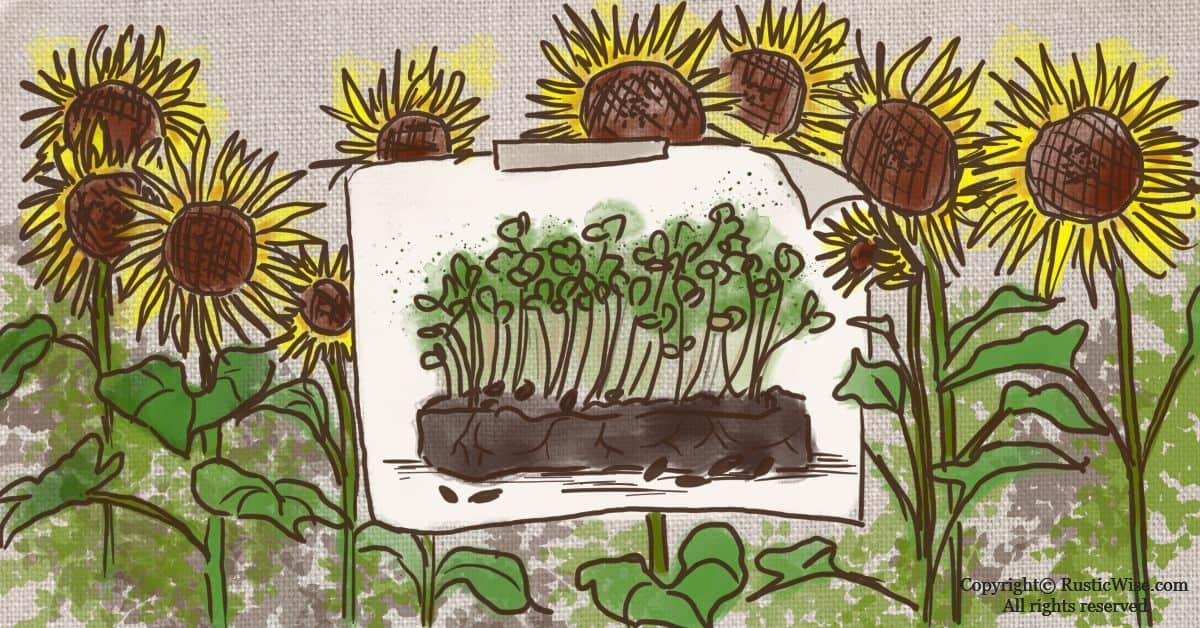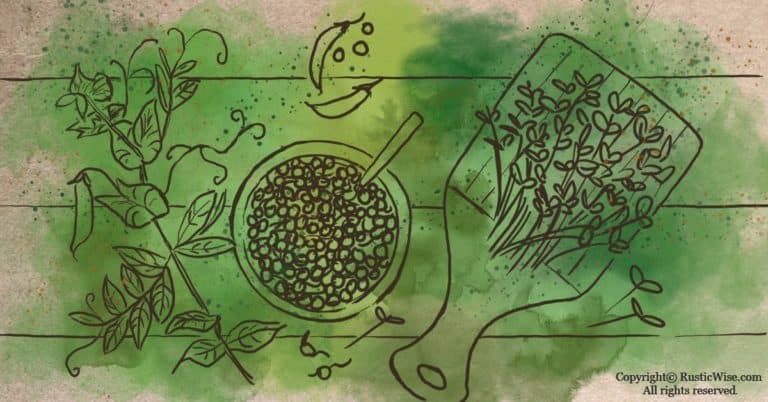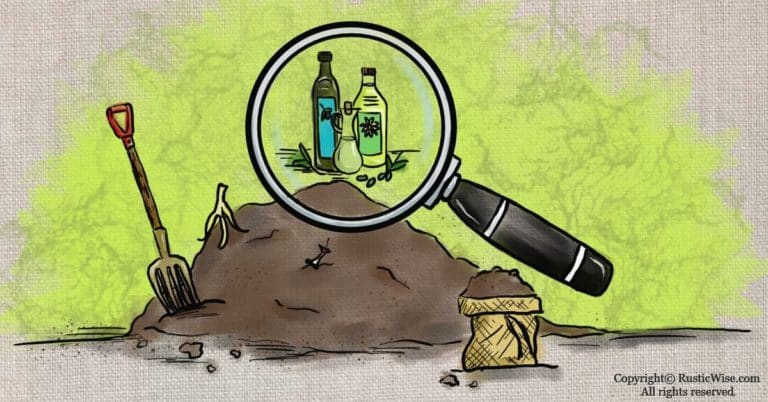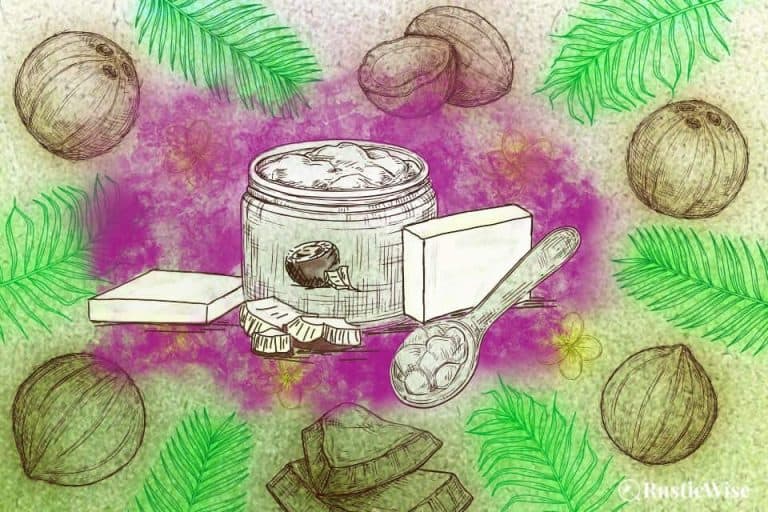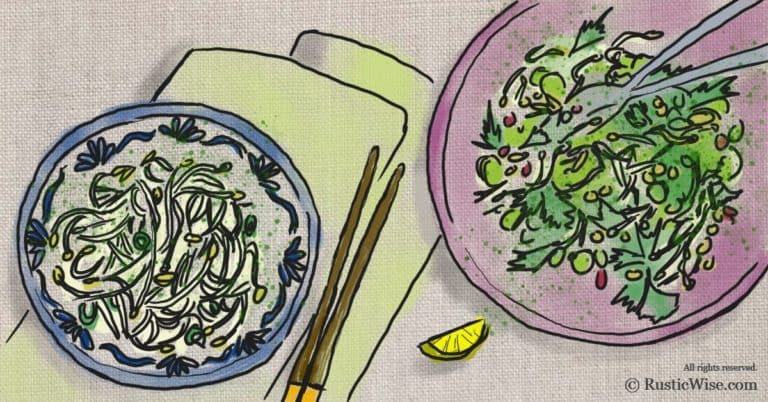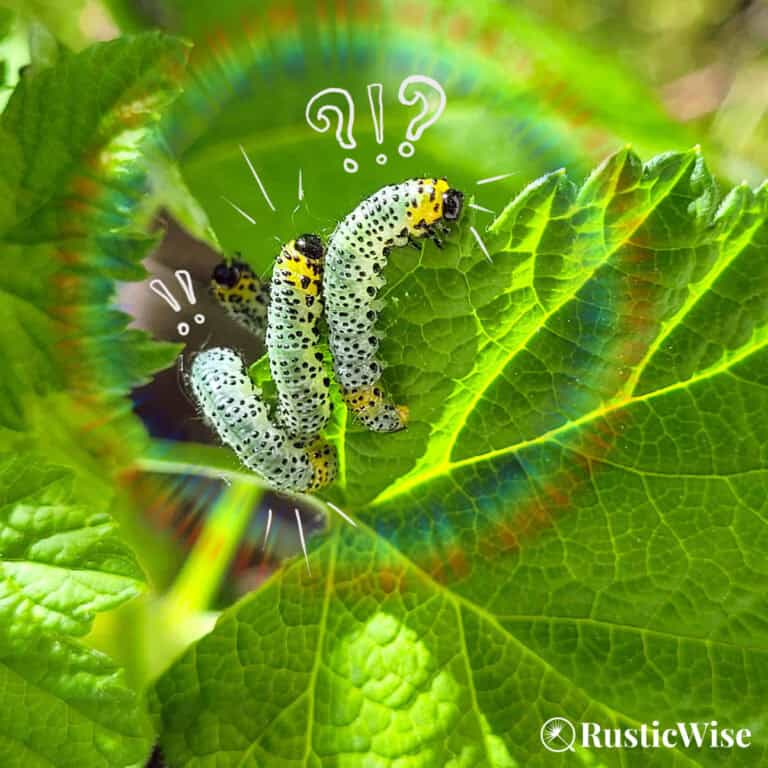Sunflower Microgreens Nutrition: Health Benefits, How To Grow & Use Them
The beauty of sunflowers lies not just in their golden blossoms, but also in the leaves and stems. You may enjoy sunflower seeds, but did you know you can also eat sunflower microgreens? Sunflower microgreens are a delicious addition to any salad or sandwich. Its sweet and nutty flavor can be added to any dish for a boost of nutrients. Read on to learn more about sunflower microgreens nutrition facts, how to grow them at home, and how you can use them!
Microgreens are simply young plants harvested before they fully mature. If you’re looking for a healthy alternative to spinach or lettuce on your salad then look no further than sunflower microgreens. Just sprinkle some over your next meal for added flavor and texture!
Sunflower microgreens nutrition is one of the best parts about these tiny plants. Did you know that they contain high levels of vitamins K, A, C, B6 and folates? These nutrients help support our immune system as well as provide us with energy for our day-to-day activities.
What are sunflower microgreens?
Microgreens are tiny plants grown from the seeds of vegetables, herbs, and legumes. They are grown in soil (or a soilless growing medium) and harvested when only 1–3 inches (2.5–7.6 centimeters) tall.
At this young stage of growth, they contain a concentrated amount of antioxidants, vitamins, and nutrients. Although they are tiny, they pack a huge nutritional punch. Depending on the variety, microgreens have higher levels of nutrients—around five times more on average—than the same leaves found on the mature plant.
While you may find sunflower microgreens, sometimes called sunflower shoots, at some specialty grocery stores or farmers’ markets, it’s much more cost-effective to grow your own. The flavor of sunflower shoots (mild, sweet, and nutty), plus its complete nutritional content make it a popular microgreen. Besides, what could be better than farm-fresh greens harvested when you want? More on growing sunnies down below…
First let’s dive into why you should be eating sunflower microgreens.
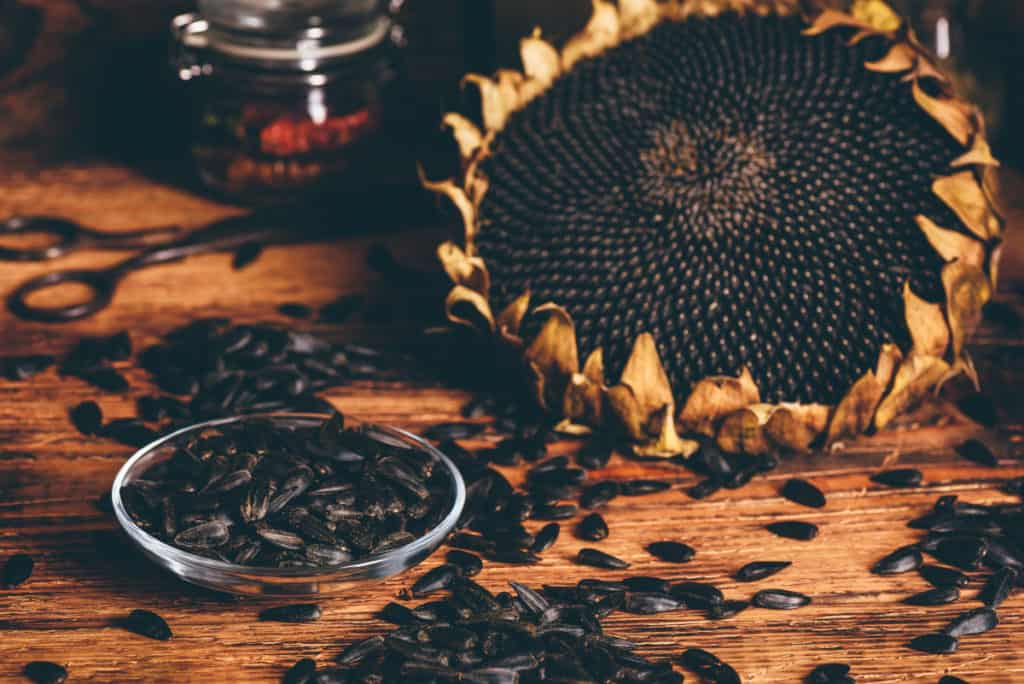
Sunflower microgreens nutrition
Sunflower microgreens provide much of your body’s daily dietary requirements and essential nutrients. These tiny greens are a good source of vitamins A, C, E, K, and B6 as well as folate. Sunnies pack in plenty of iron and protein. They contain healthy fats like omega-3s and omega-6s for brain health. There are a complete source of amino acids as well.
100 grams of sunflower microgreens has 27 calories.
| Sunflower Microgreens (100 grams) | |
|---|---|
| Calories | 27 |
| Carbs | 4 grams |
| Protein | 2 grams |
| Fat | 0 grams |
| Fiber | 2 grams |
| Vitamin K | 37% of the DV |
| Vitamin E | 22% of the DV |
| Vitamin A | 18% of the DV |
| Vitamin C | 11% of the DV |
| Iron | 88% of the DV |
| Copper | 49% of the DV |
| Selenium | 35% of the DV |
| Manganese | 38% of the DV |
| Thiamin | 21% of the DV |
| Folate | 16% of the DV |
| Magnesium | 16% of the DV |
| Riboflavin | 14% of the DV |
| Vitamin B-6 | 10% of the DV |
| Niacin | 8% of the DV |
| Calcium | 7% of the DV |
| Phosphorus | 7% of the DV |
| Potassium | 6% of the DV |
| Zinc | 6% of the DV |
| Pantothenic Acid | 4% of the DV |
Tip: Sunflower microgreens are a good choice for those on plant-based diets as it provides high levels of iron. Iron from plants is harder to absorb which is why some dieticians recommend vegans or vegetarians to consumer twice the recommended amount (so long as it’s from food sources).
“Keep your face to the sunshine and you cannot see the shadow. It’s what sunflowers do.”
—Helen Keller
Health benefits of sunflower microgreens
Let’s take a closer look at how eating sunflower microgreens can boost your wellbeing. If you’re looking for a nutrient-dense healthy food with little calories or fat, sunflower microgreens would play a great part in a weight-loss diet.
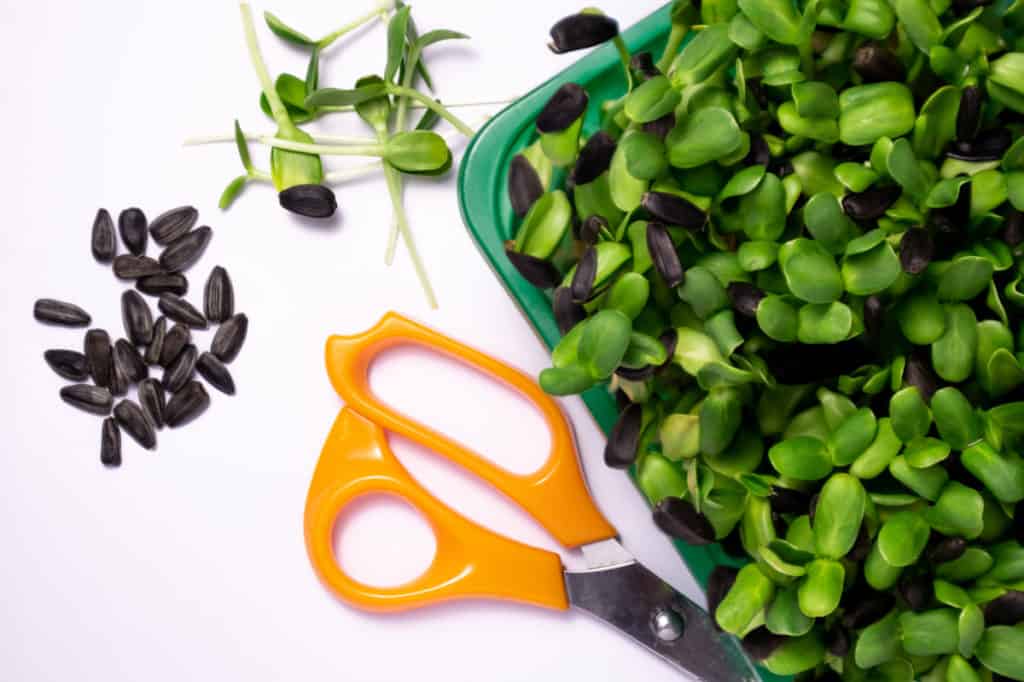
Credit: Deposit Photos
How to grow sunflower microgreens
Sunflower microgreens are grown from sunflower seeds. Now, I know what some of you are thinking: can you use birdseed or regular sunflower seeds you find at the grocery store to grow microgreens? We don’t recommend it!
Why? Well, if you’re planning on using birdseed, it’s not meant to be eaten by humans. You’re working with a lower-quality seed which won’t produce the best results. You’ll likely need to spend some time picking out debris. But, if you’re insistent on using bird seed, just ensure they are untreated and chemical-free.
If you’re planning on using sunflower seeds you find at the grocery store, these aren’t ideal either. These are not meant for sprouting, and are often contain salt or sugar, or other preservatives you really don’t want on your microgreens.
The best way to grow sunflower microgreens is to purchase a bag of organic seeds specific to microgreens from a reputable supplier. These are high-germination seeds that are free of chemicals and will help produce the best and tastiest greens. The kind you’ll see most often are black oil sunflower seeds.
And these are called sunflowers for a reason—these plants are sun-lovers. So pick a sunny window (south-facing preferably) or some place where they can get plenty of direct light (once they’ve germinated). If you don’t have access to this, consider using grow lights.
These sunflower seeds need to be pre-sprouted first. This is because they have a hard outer layer. Most other microgreens don’t require this.
Ready to grow your own sunflower microgreens? Let’s do this!
Check out our article for a more in-depth growing guide for sunflower microgreens.
Ready to harvest in 8–12 days.
Supplies:
- Growing tray and cover: If you have standard growing trays (5 X 5, 10 X 10, or 10 X 20), great! You’re all set to go. If not, no worries. You can use any shallow container you have at home such as leftover takeout containers, plastic clam shells (from produce), or pie plates. Just remember to poke a few holes along the bottom for drainage. You’ll also need a cover to cover the seeds during germination.
- Growing medium: Use organic potting soil, or a soilless medium such as coconut coir.
- Sunflower seeds: As we mentioned above, we recommend using high quality seeds for growing microgreens. For sunflower seeds, you’ll need roughly 1/4 cup for a 5 X 5 growing tray.
- Water and a spray bottle/mister
- Glass jar (wide-mouth mason) for soaking and pre-sprouting seeds and a lid
- Pre-soak and pre-sprout. This step is vital as it speeds up the growing process, so don’t skip this step. Measure out your seeds and place in a glass jar. Fill with cool water and allow it to soak overnight or for 8–12 hours. The sunflower seeds float to the surface. Keep them all underwater by placing a lid or something to ensure they stay underwater. Drain and rinse. Keep your jar at room temperature away from direct sunlight. Continue to rinse and drain the seeds twice a day until you see signs of growth (you should see growth typically within 24–48 hours or so).
- Prepare the growing tray. Ensure your growing tray is clean as this prevents bacteria or mold growth. Fill the tray with 1–2 inches (2.5–5 centimeters) of soil. Lightly compress the soil with your hands or a small piece of cardboard. Thoroughly moisten the medium with clean water. The soil should feel moist, but not soggy.
- Broadcast seeds. Evenly spread the seeds across the surface of the growing medium. Don’t worry if a few are touching. Gently press the seeds down with your hands or a piece of cardboard so they are making contact with the soil. Use your water mister to quickly moisten the tops of the seeds.
- Cover the seeds. Cover the seeds to keep the light out and moisture in. Ensure there’s adequate airflow. Place at room temperature in a low-light area. During this time ensure the soil is kept moist to allow for healthy growth. You may need to mist once a day or so. Remember to place the cover back on. Seeds germinate around Days 3–4.
- Remove cover and place in a sunny area. By now the sunnies should show steady growth and are ready for sunlight to help them get nice and green. Remove the cover and place the sunflower microgreens in direct sunlight.
- Keep well watered. As the shoots are in direct sun, they’ll require more water. Unlike other types of microgreens, sunflower shoots benefit from top watering. They aren’t as fragile as other greens and top watering helps to keep them well hydrated while also loosening any seed hulls. Of course you could also use the bottom watering method as needed. Fill a clean tray or basin with about 1/2-inch water. Place the tray of microgreens into the watering tray and let it sit and soak up water for several minutes. Remove from water and empty any excess water.
- Harvest. Your sunflower shoots are ready for harvesting between days 8–12 or when 2–4 inches (5–10 centimeters) tall. Brush off any seed hulls. Use a pair of sharp scissors or a knife to cut the greens just above the soil.
Store your sunflower microgreens in the fridge for up to one week.
👉 For more in-depth growing instructions, check out our article on How To Grow Sunflower Microgreens: Tips for Success.
How to use sunflower microgreens
Brighten up your culinary creations with sunflower microgreens. Now that you’ve grown your own batch of fresh sunnies, here’s a few ideas on how to use them.
- Use as a salad base. While these greens are considered “micro” they’re on the larger side compared to other varieties of microgreens. This gives them some weight and substance which can be a big plus for salads. Their mild and nutty flavor pair well with pea shoots. Try making a salad base with some sunflower and pea shoots and top with your favorite dressing.
- Add to sandwiches, wraps, or tacos. Use sunflower microgreens to add texture and flavor to any place where you’d normally use leafy greens.
- Sprinkle on top of avocado toast. Add more greens to your avocado toast with a dash of sunflower microgreens.
- Blend into a smoothie. Throw in some fruits (strawberries, bananas, or whatever you have on hand), add some healthy fats from seeds (chia or flaxseeds); add water or milk if desired. Blend and enjoy.
- Lightly sauté. If you prefer to cook your greens, lightly sauté sunflower shoots for a minute or two on your stovetop with a drizzle of olive oil.
- Incorporate into egg dishes. Omelettes, frittatas, scrambled eggs, and other cooked egg dishes go great with microgreens.
- Use as a garnish. Sprinkle over soups, stews, or other cooked dishes for added flavor and dimension.
- Eat on its own as a healthy, crunchy snack.
Related questions
What’s the difference between sunflower sprouts and sunflower microgreens?
Although the terms sprouts and microgreens are used often interchangeably, they’re not the same. You can grow sprouts without any soil, typically in a glass jar. Sprouts are ready to harvest sooner than microgreens. You can grow sunflower sprouts from sprouting seeds to enjoy the same nutty flavor as sunflower microgreens.
Can cats eat sunflower microgreens?
According to the ASPCA, sunflowers are non-toxic to cats, dogs, and horses. This applies to sunflower microgreens too. So if your furry pet accidentally ingested a few sunflower microgreens, they’ll be fine. If you’re planning on including microgreens into their diet, you can try chopping it up and incorporating into their regular food as part of a healthy diet.
👉 If you like this post, see our Complete Guide to Growing Microgreens at Home. 🌱
Would you like more timeless tips via email?
Fun tips to help you live an independent, self-sustaining lifestyle. Opt-out at any time.


References:
- Lester, Gene & Xiao, Zhenlei & Luo, Yaguang & Wang, Qin. (2013). Microgreens: Assessment of Nutrient Concentrations. Journal of Agricultural and Food Chemistry. Accessed April 2021.
- My Net Diary, Sunflower microgreens, Ne Day Farms, https://www.mynetdiary.com/food/calories-in-sunflower-microgreens-by-ne-day-farms-oz-16406434-0.html. Accessed April 2021.
- Harvard Health, Listing of Vitamins, https://www.health.harvard.edu/staying-healthy/listing_of_vitamins. Accessed April 2021.
- Sprout People, Sunflower Greens, https://sproutpeople.org/sunflower-greens/. Accessed April 2021.

Author: Theresa Tesolin
Theresa is co-founder of RusticWise. She helps people unleash their inner DIY spirit by encouraging them to get dirty and make or grow something from scratch.

